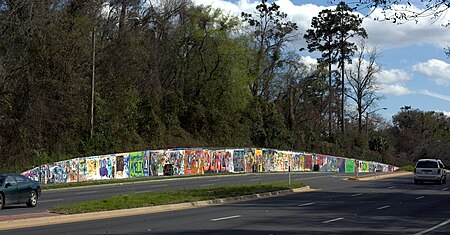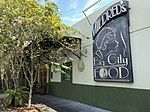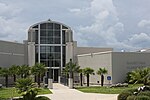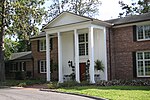34th Street Wall

The 34th Street Wall is a 1,120-foot-long retaining wall along SW 34th Street (Florida State Road 121) in Gainesville, Florida. It was constructed in 1979 by the Florida Department of Transportation to prevent erosion on the adjoining University of Florida golf course when the road was widened from two to four lanes, necessitating cutting through a small hill. The otherwise nondescript poured concrete wall is notable for being almost entirely covered by graffiti, and it has served as a sort of ever-changing bulletin board for the Gainesville community since the 1980s. Items painted on the wall have included marriage proposals, birthday wishes, graduation announcements, celebration of athletic victories, activist and public awareness statements, tributes, promotions, and memorials, including two permanent memorial panels for victims of the Danny Rolling murders and Gainesville native Tom Petty. Although most of the graffiti is painted by university students and other members of the community, there is occasional tagging and professional art. After decades of use, it is estimated that paint on the center of the wall is about 250 layers thick.
Excerpt from the Wikipedia article 34th Street Wall (License: CC BY-SA 3.0, Authors, Images).34th Street Wall
Southwest 2nd Avenue, Gainesville
Geographical coordinates (GPS) Address Phone number Website Nearby Places Show on map
Geographical coordinates (GPS)
| Latitude | Longitude |
|---|---|
| N 29.6477 ° | E -82.3722 ° |
Address
Mark Bostick Golf Course
Southwest 2nd Avenue 2800
32607 Gainesville
Florida, United States
Open on Google Maps











